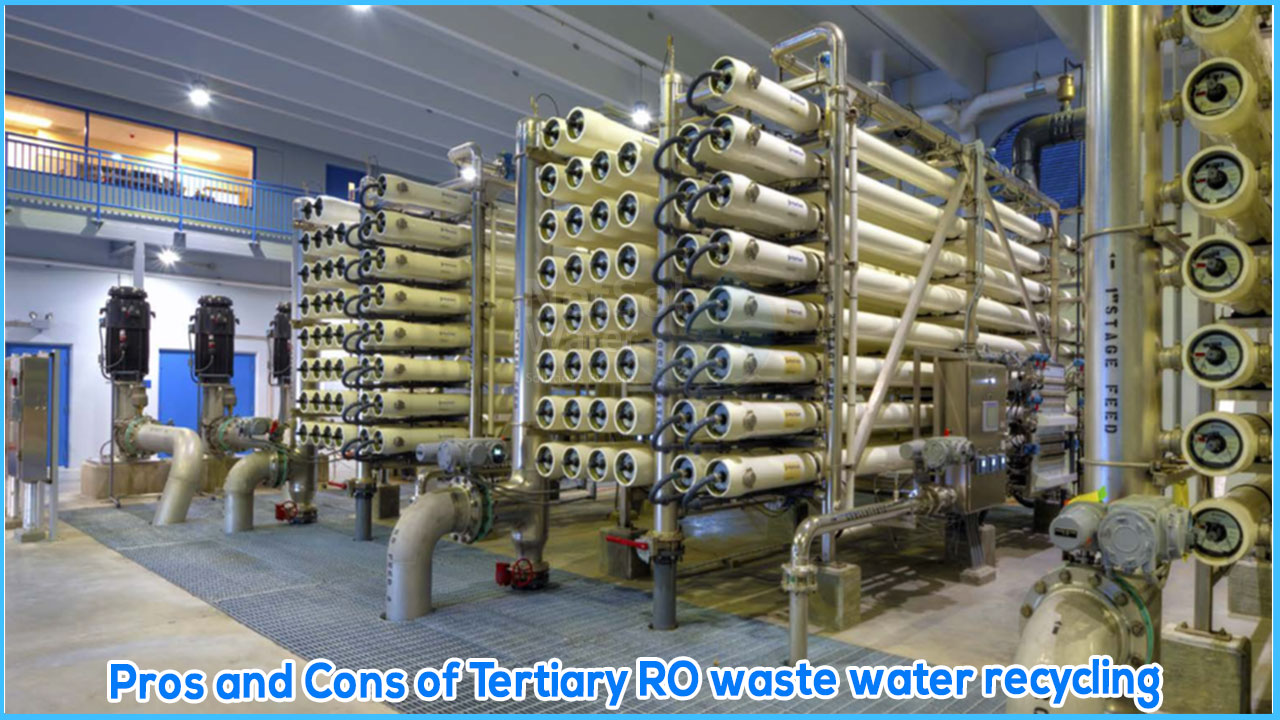Prior to being reused, recycled, or discharged into the environment, tertiary treatment improves the quality of wastewater.
Inorganic compounds can be found in large quantities in industrial wastewater. Because they are mineral-based rather than organic, they are damaging to rivers and lakes. Any leftover unnatural chemicals, as well as nitrogen and phosphorus, will be removed during this procedure.The leftover solids are clumped together with a common coagulant, making them easier to remove. The wastewater is then disinfected further in a chlorine contact tank, which removes germs that could be harmful to human and marine life. Sodium bisulfite is then used to eliminate any leftover chlorine.
Tertiary RO waste water recycling has emerged as a viable option for supplementing water supplies in areas where water constraint exists. For both municipalities and industrial enterprises, RO desalination in tertiary wastewater processes has proven to be a cost-effective technique to reuse water.
With sufficient pre-treatment in the primary and secondary stages, tertiary RO waste water recycling has been proven to dramatically reduce total dissolved solids, trace heavy metals, bacteria, viruses, and other dissolved pollutants.
ENVIRONMENTAL EFFECTS OF TERTIARY WASTEWATER TREATMENT
Water pollution legislation governing levels of BOD (biological oxygen demand), FOG (fats, oils, and grease), and TSS (total suspended solids) in wastewater are becoming more stringent in many local water authorities.
The Biochemical Oxygen Demand (BOD) is significant because it provides a measurable scale for evaluating the impact of discharged wastewater on the receiving environment. The bigger the amount of organic matter available for oxygen-consuming bacteria, the higher the BOD value. Dissolved oxygen concentrations in a sample of wastewater are measured before and after an incubation period to precisely calculate BOD.If wastewater entering the ecosystem contains insufficient dissolved oxygen, aquatic organisms will be stressed, rendering the environment unfit for life.
PROS OF TERTIARY RO:
1-Removal of high TDS levels: Because of the selectivity of these low fouling membranes for pollutant removal, tertiary RO wastewater recycling is one of the most successful techniques of TDS reduction.
2-Modular:The compact, modular solutions are well suited for use in both communities and businesses. These systems are usually simple to integrate into current treatment system procedures or new installations. Treatment capacity can be increased by adding more modular units.
3-Color reduction, trace tannin, COD, and heavy metals: Other trace dissolved pollutants, like TDS, can be decreased greatly utilizing a tertiary RO wastewater recycling system.
CONS OF TERTIARY RO:
1-Pretreatment must be effective: Under the correct circumstances, reverse osmosis is a successful tertiary therapy. If sufficient pretreatment is not provided in prior wastewater treatment steps, the membrane can get blocked with particles or scaled with precipitates. Treatment systems that use RO wastewater recycling as a tertiary step usually have enough preceding treatment stages in place to address any foulants before they reach the RO treatment system.
2-Demand for a lot of power: The system's steady flow of constant pressure can draw quite a bit of power. There is, however, a way to mitigate this to some extent. It is feasible to recycle the pressure that builds up in the system and use it to pressurize the influent water utilizing pressure exchanger technology. As a result, the net power requirement is reduced.
3-Membrane preservation:In order to enhance efficiency, the membrane must be carefully maintained in addition to pretreatment. However, if pretreatments are efficient and a potential membrane cleaning cycle is included, maintenance can be decreased. This also increases the membrane's lifetime, reducing the frequency with which it must be replaced.




